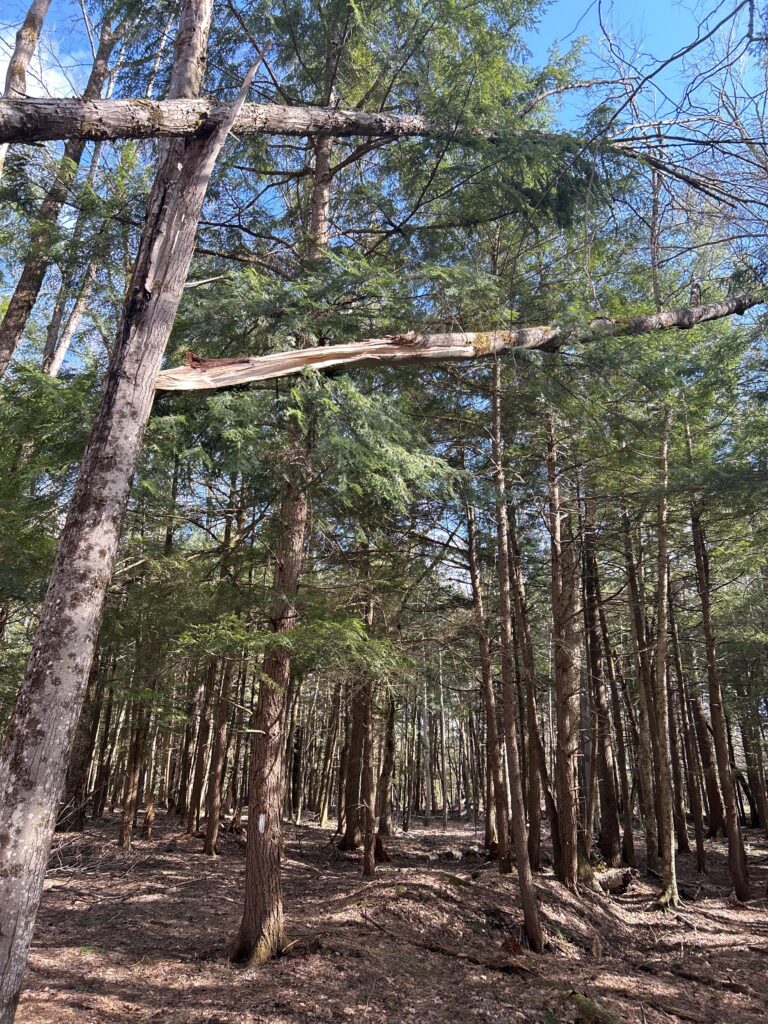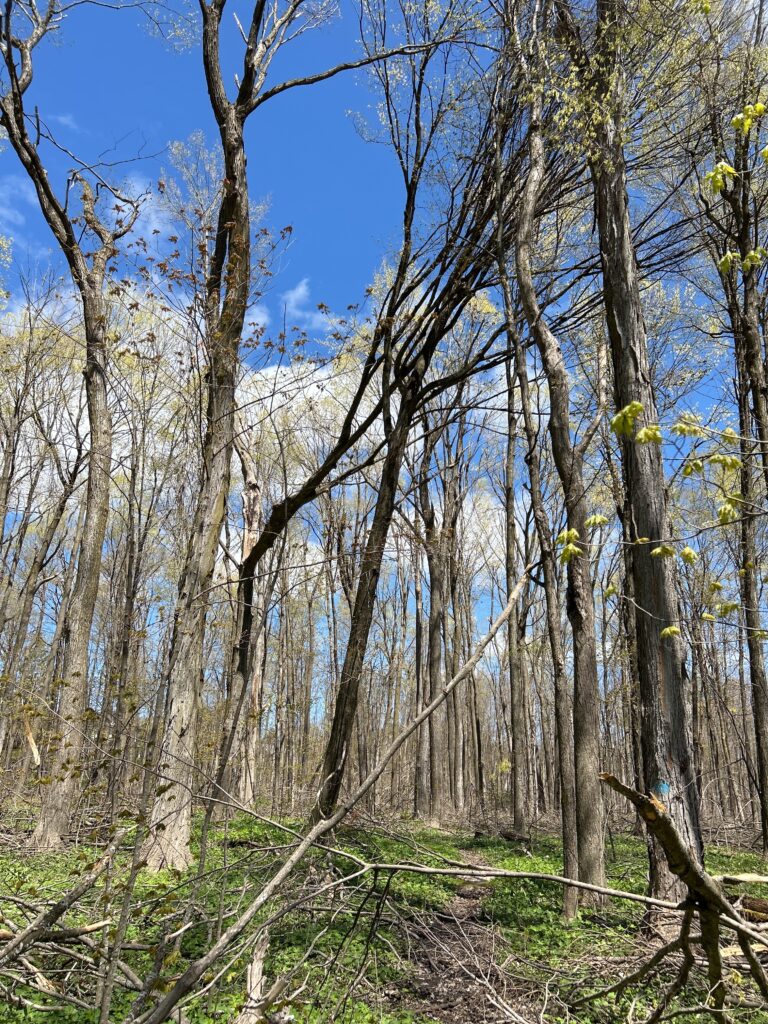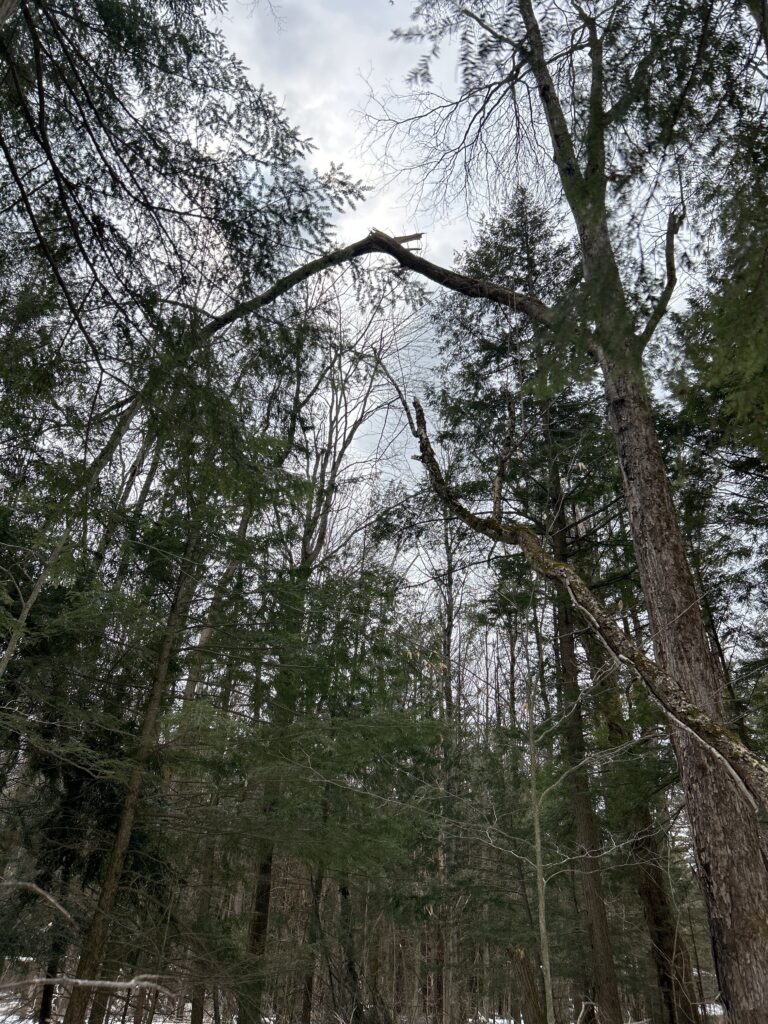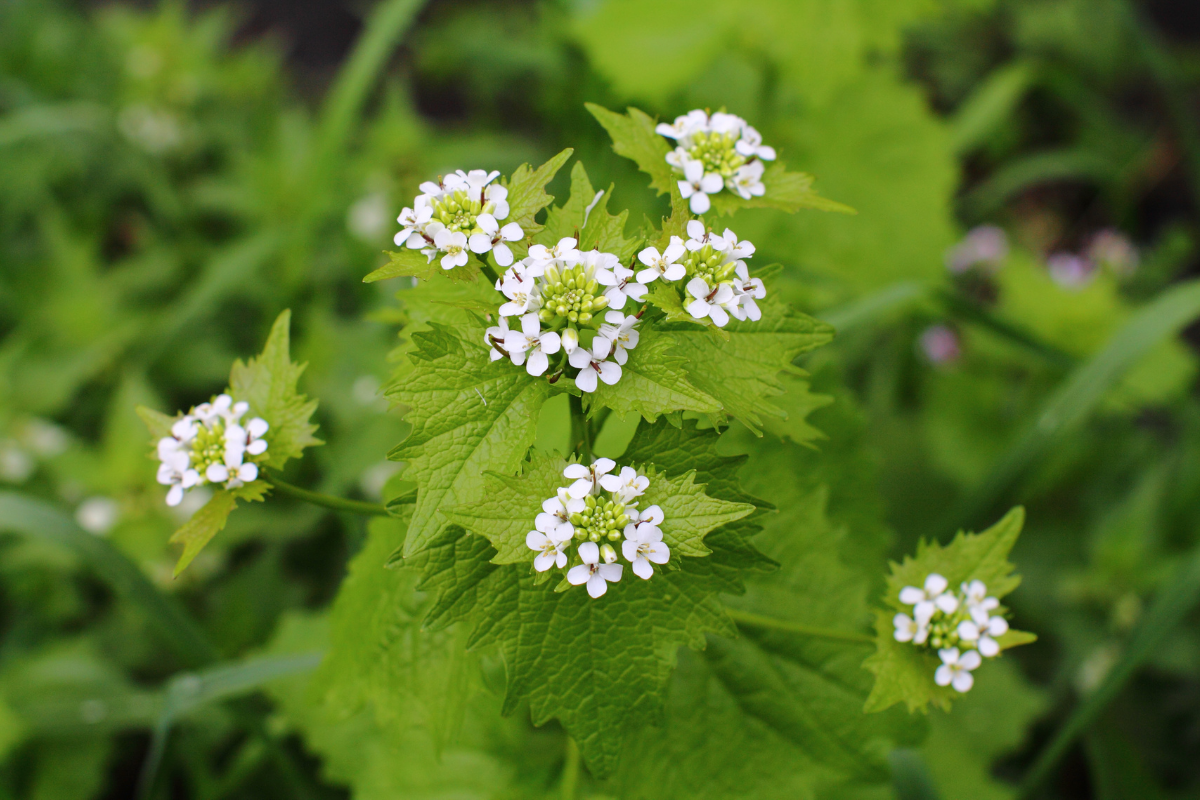


The start of the Invasive Species field season has been full of interesting and new challenges. After the ice storm, the Stewardship team at The Couchiching Conservancy had to restructure their priorities and shift their focus towards safely opening nature reserves. The amount of debris and damage from the ice storm has caused safety concerns and has created weeks of chainsaw work across many of the nature reserves. Volunteers and staff have been on the trail networks during clean up days in the efforts of making trails safe again. Due to safety concerns of overhead hazards, broken limbs and debris on the ground we have asked our eager Garlic Mustard pulling teams to hold off on entering their designated nature reserves until we can clear all hazards. Traditionally, May is prime time to start pulling these plants. As soon as the snow is melts, they are one of the first invasive plants to pop up. Garlic Mustard is a ground dwelling plant that has a distinctive sharply toothed leaf and smells like garlic when the leaves are crushed. The reason we focus on removing this plant is because it can take over an area and can crowd out native species.
At our Church Woods Nature Reserve, the surrounding community has been a huge part of the mitigation of Garlic Mustard. Each year the residents walk the nature reserve and spend hours pulling these green plants. Their efforts over the years have been crucial in helping us to reduce the number of adult plants that produce seeds. Church Woods is a beautiful ash forest, but after the storm overhead hangers and other hazardous trees have caused a huge safety concern. An assessment of the trails was done by staff and our arborist. The concerning trees are going to be cleaned up and once they have been cleared, trails will re-open and volunteers can start pulling Garlic Mustard again.
Although we have had an interesting start to the season, we are looking on the brighter side of things. Our goal this year is to fill both of our new compost bins with invasive vegetation and collect invasive species data with the use of a drone. Last year, our team tried out a different mapping technique with the use of a drone and the results were remarkable. Mapping Invasive species can sometimes be a difficult task from the ground. Entering wetlands and bush whacking are great ways to get to know the land, but with eyes in the sky, staff can see different patches of vegetation and are able to assess how large the patches are. The drone we use can fly over a set area while taking photos ever few seconds in a transect like patterns. From these photos our team is able to stitch them together and create a map like photo that allows us to see the desired area from an overhead perspective. We have found this technique is very helpful when documenting non-native Phragmites and determining how large Buckthorn patches really are on the Alvar. This technique not only cuts down on how much time is spent mapping Invasive Species on the ground but has proven to be a very accurate method when determining where the patches of species start and stop. Prospect Marsh has been a great nature reserve to practice these drone mapping techniques on. We were able to find a new patch of invasive phragmites at the back of the property that we would not have been able to see from the ground because of the water body that runs through the property. From new discoveries like this we can continue to build on the nature reserves stewardship plan and can work towards mitigating new invasive species found. We are hopeful that the drone will be able to help us on nature reserves that are more remote and where accessible is limited.
As the season progresses and trails start to re-open, invasive species volunteer event days and sign up sheets will appear in our newsletter. We look forward to the months ahead and appreciate all the support from our volunteers. If you would like to donate to help with trail clean-up efforts please click here.

